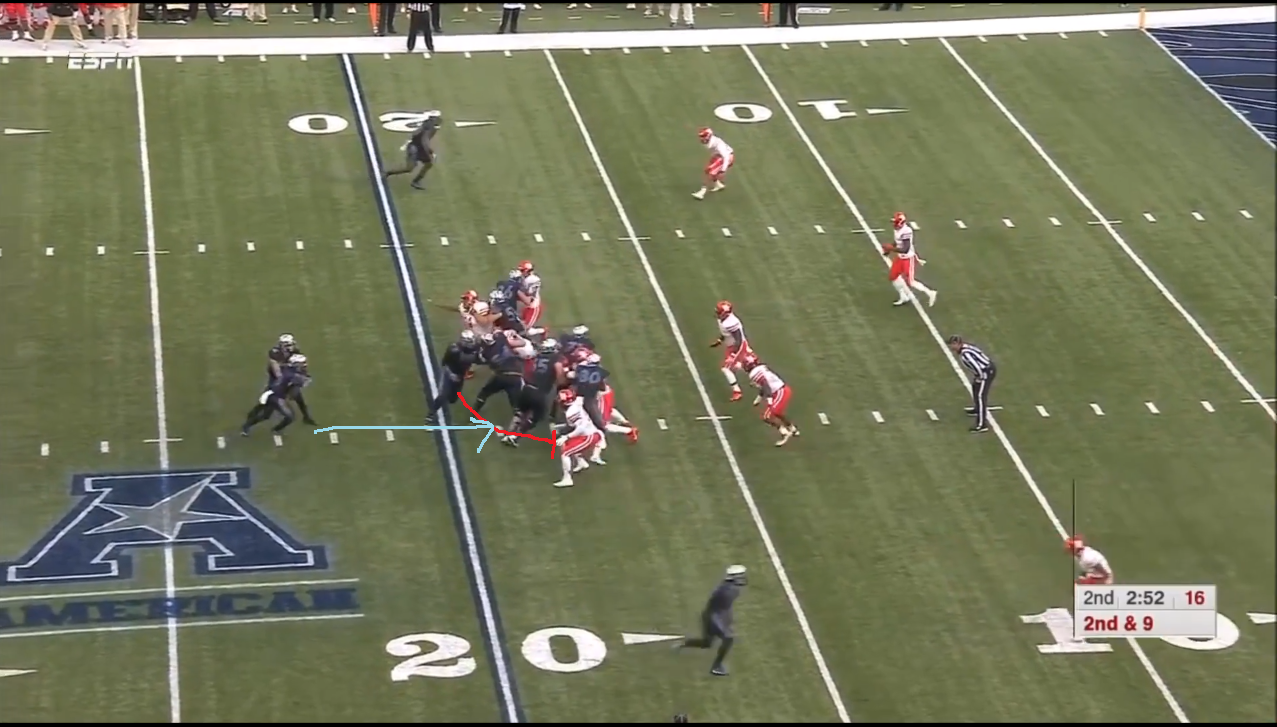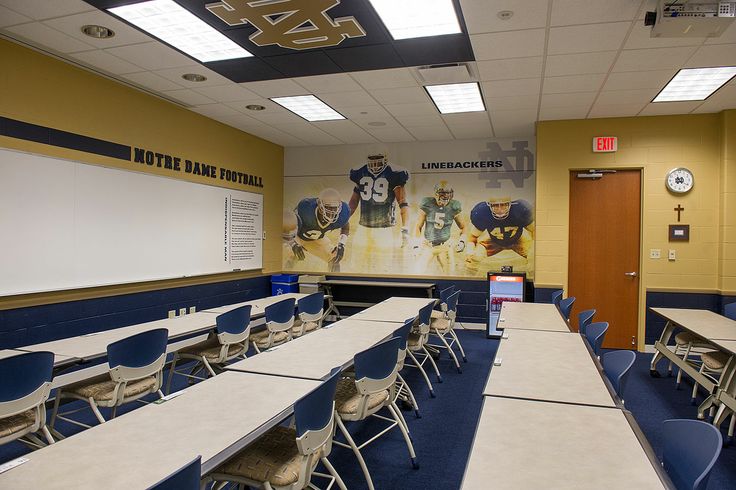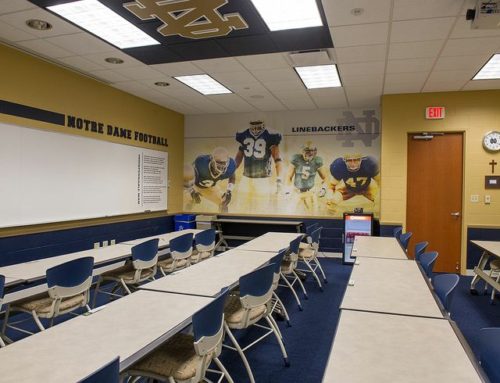Notre Dame recently hired Chip Long, the first-time playcaller from Memphis, to be the offensive coordinator for Notre Dame. Most speculated that the only reason that Notre Dame would force out Mike Denbrock is if Brian Kelly is going to take direct control of play calling and direction of the offense, however it is now clear that Chip Long will have full play calling duties. What changes if any might we expect from Chip Long?
According to the stats, (from Eric’s article here) Memphis was fairly pass-heavy (443 pass attempts vs 487 rushing attempts) and not particularly notable at running the ball (#44 rushing offense S&P) or passing (#41 passing offense S&P). All of this, from the perspective of a smaller pond might seem more of the same as to what Brian Kelly has historically done.
However, Memphis’s 2016 offense was philosophically different in several major ways from the most recent Notre Dame offenses. According to my incomplete (5.5 games done) charting of the 2016 ND offense, 42% of runs were option based (reading a player by the quarterback) and 19% of runs were designed for the quarterback. This essentially gave the offense an “additional” blocker in the run game. Also, Notre Dame used several “Run-Pass Options” or RPO’s but the vast majority (by my count all but 2 or 3) were pre-snap reads of alignment (with the several notable exceptions )
On the other hand Memphis rarely involved its quarterback Riley Ferguson directly in the run game despite him being strikingly similar to Kizer (both are 6’4, and Kizer is 20 pounds heavier, but both have deceptively fast speed once they are moving). Ferguson, sack adjusted, finished with 158 yards rushing and in the games I looked at they were caused almost entirely by scrambling.
Here is an example of one of Ferguson’s scrambles.
What Memphis schemed instead was rather than read a box defender with the quarterback’s legs they would incorporate a pass concept directly into the run action and have the quarterback look off the defender of a specific route, if the defender played the run the quarterback would complete a mostly wide-open pass.
Basically, Notre Dame’s usage of the RPO was more of a constraint on alignments (pre-snap) while Memphis’s reminded me of quote from this excellent article. According to Glenn Tiger Ellisen he defined the “Run-and-Shoot” as a football offense which “defies the defense to analyze any of its plays as a run or pass while the play is developing.” And “
The downside to the Chip Long’s method is that you do not gain an additional blocker at the point of attack, instead the “constrained defender” is often times outside the box. Chip Long is probably considered more pass happy than is fair, because very often he would “call” a rushing play but the defense would not honor the passing concept. His style of RPO is going to naturally make his stat-wise rushing look worse and his stat-wise passing look better even when he calls the exact same play. Therefore, I’m not very concerned that his passing attempts were high and his rushing S&P wasn’t particularly high. I’d wager that his true “called run” offense was significantly better than what it appears by the stats.
Some teams have had both an unblocked box defender and a passing concept that the quarterback is responsible simultaneously to read, in general I’m not a big fan of it. It occasionally exposes your quarterback to a wicked full speed hit (Kentucky this year had several notable examples) from some of the greatest pass rushing athletes (the defensive ends and outside linebackers).
What might this mean for Notre Dame 2017?
I’d expect that we will see a decreased % of option and designed QB run plays due to the lack of quarterback depth (currently looking like Wimbush or bust) and Long’s love of QB-risk-free second and third-level RPOs. This isn’t to say that Long won’t utilize pre-snap RPOs and option plays just that it will likely be less emphasized as a Wimbush injury would likely doom Notre Dame 2017 and Kelly’s job. Also, we may see the introduction of an unusual running play that Long used a fair bit.
This running play is something that I haven’t seen ran much but is similar in concept to “Slice” or “Bluff” which is where a wing formation Tight End either traps the opposite side end-man-line-of-scrimmage or arcs around him and block the next defender. However in this play by Memphis, the tackle next to the inline tight end is the puller. The running back has a wide degree of freedom in where to head, but it is generally a counter play with the intended attack either being straight ahead of the running back, or toward of the field that the running back lined up on.

The running back, thanks to the pulling tackle and the excellent blocking of the Memphis offensive line, cuts inside of the puller for a nice gain.

You can watch this play here.
Altogether I’d probably call this play “half back counter tackle long trap”, the “long” part of long trap just refers to the to-be-trapped player being 3 or more gaps away from the trapper. The main advantage of this play is it functionally similar to the split flow action that Notre Dame used a significant amount of the time in 2016 but has the tight end in position to be an immediate vertical threat from the inline position, opposed to several yards off in the wing position. Perhaps with decreased wing formations, we might see the tight end used more vertically, or at least used more at all in the passing game.
An excellent article that discusses some of the RPOs that Long has used can be found here.
Some 40 clip that I made about interesting plays of the 2016 Memphis offense can be found here.The four games (condensed form) that I looked at can be found here.
As always be sure to follow 18stripes on twitter.



Very cool downinthebend. I really appreciated the references too. Great job.
Thanks!
Thanks Downinthebend, great work!
Great work! A redundant compliment, but I’ll happily parrot Russel & Larz if it gets you breaking down more plays!
Very nicely done and a good example of how stats don’t always necessarily reflect philosophy. It will be interesting to see how Wimbush operates here. I never saw Kizer’s strength as making a quick read and getting the ball out to where it needs to go. Rather, I thought he did better buying time while keeping his eyes open downfield.
A run pass option philosophy generally leads to more guys getting the ball in space through the air in the short and intermediate range. The last couple years at ND, the passing game was downfield or bust most of the time. So while the running percentage might not be as high as some would like, better use of the short passing game can kind of account for that.
Part of the issue with last year on the quick passing game… is there wasn’t much of one at all. In the games I charted (5.5) ND ran 18 “quick” (3 step concept) passes and several of those were fades in the end zone. There simply was not a quick passing game (aside from screens) for whatever reason.